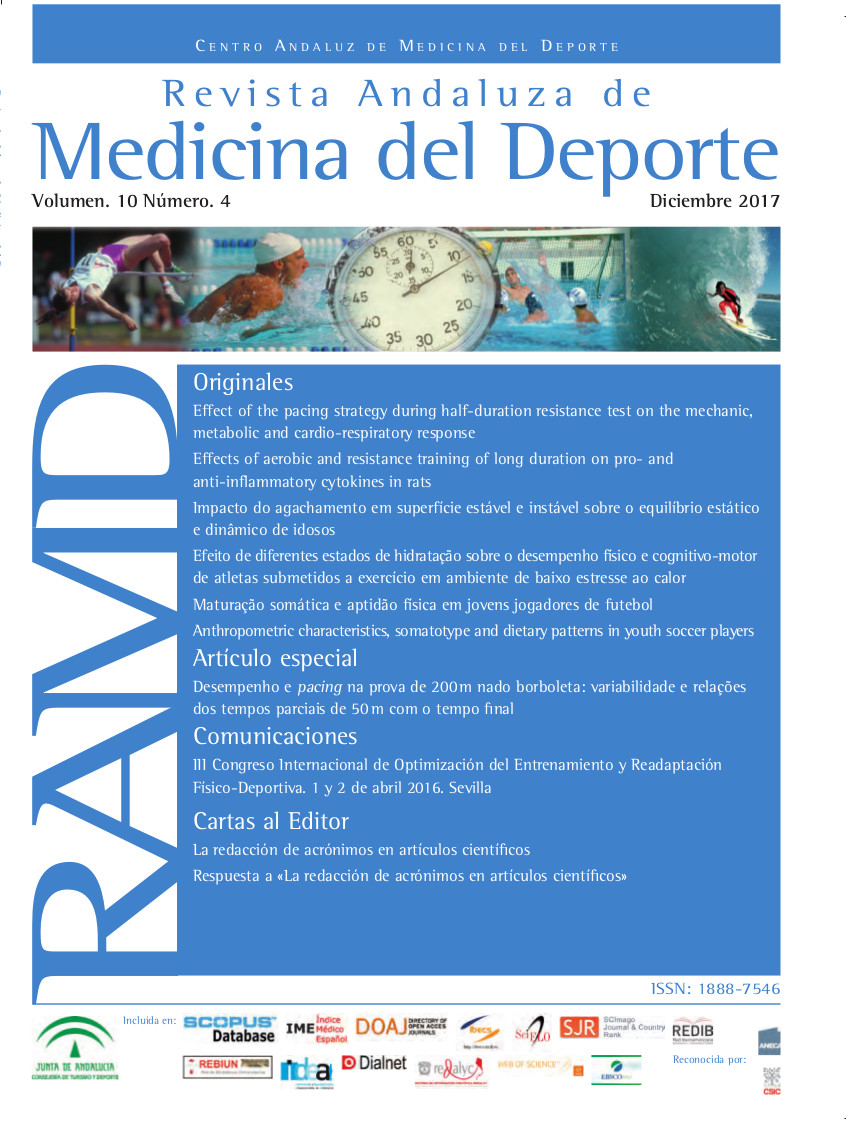Effect of the pacing strategy during half-duration resistance test on the mechanic, metabolic and cardio-respiratory response
Abstract
Changes in pacing rhythm are translated into functional and metabolic changes that can be significantly reflected in the final results of an athlete.
MethodTen male subjects, with moderate performance level (age: 25.2 ± 2.2 years; VO2max: 56.9 ± 5.7 ml kg−1 min−1), performed four 5-min races with different pacing strategies: constant-pace (CP), record-pace (RP), kicker-pace (KP), incremental-pace (IP).
ResultsThe cardio-respiratory response did not show statistically significant. There were statistically significant differences (p ≤ 0.05) in the energetic efficiency among the protocols CP vs. RP, CP vs. KP and RP vs. IP. When results were analyzed by partials (1-min duration phases), significant differences were observed in the energetic efficiency during the 3rd-min among CP vs. KP, RP vs. KP and KP vs. IP. These significant differences were extended to the 4th-min when comparing CP vs. IP, CP vs. KP, KP vs. RP and KP vs. IP. In the last minute of the test, there were significant differences among CP vs. KP. No significant differences were found in any of the variables assessing anaerobic metabolism (accumulated oxygen deficit, oxygen debt, oxygen uptake kinetics and blood lactate) between both protocols.
ConclusionsResults suggest that the main functional systems response are significantly affected by the pacing strategy used by middle-level subjects during middle-distance running.


